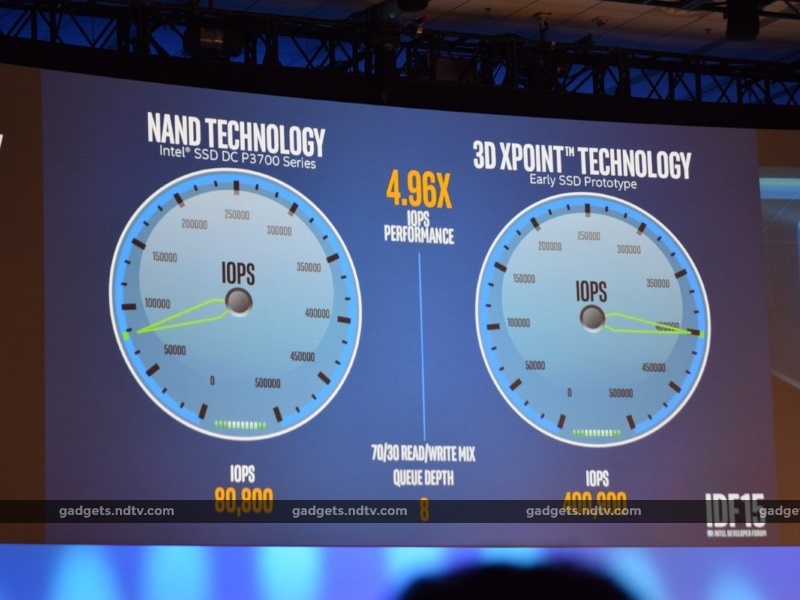Intel announced the first commercial applications of its revolutionary
3D XPoint non-volatile memory technology, which was announced less than a
month ago. 3D XPoint, developed in collaboration with Micron, is
claimed to be the most significant breakthrough in computer architecture
in 25 years.
3D XPoint is Intel's name for a new type of non-volatile
memory that is claimed to be as much as 1,000 times faster and 1,000
times longer lasting than current-day NAND flash, while also allowing
for 10x denser storage capacities.
Intel CEO Brian Krzanich and
SVP Rob Crooke announced a new brand for storage products, Intel Optane,
at the end of the opening keynote at the company's annual Intel
Developer Forum event in San Francisco. Optane products will be
available first in the form of SSDs and then also as traditional DIMMs
starting in 2016.
Optane products will primarily be aimed at the
enterprise, with data centres and applications that need to process
massive data sets the most obvious customers. Krzanich did not specify
details of the connection standards that the upcoming SSDs and DIMMs
will use. Products suitable for the consumer market, as well as embedded
solutions, are likely to follow later.

3D XPoint could eventually
do away with the need for separate high-speed RAM and high-capacity
permanent storage devices, resulting in a massive change to the way all
kinds of computers are designed and built. A demonstration on stage
showed two comparable systems running live benchmarks - the one with an
Optane device exhibited up to 5.47x faster IOPS performance than one
with Intel's current high-speed DC P3700 SSD.
Disclosure: Intel sponsored the correspondent's flights and hotel for the event in San Francisco.
 Intel Optane SSD 800p Review5 February 2019
Intel Optane SSD 800p Review5 February 2019 Intel Optane SSD 900P Launched, Promises 4X Speed Improvement Over PCIe SSDs27 October 2017
Intel Optane SSD 900P Launched, Promises 4X Speed Improvement Over PCIe SSDs27 October 2017 Intel Optane Memory Review28 August 2017
Intel Optane Memory Review28 August 2017 Intel '3D Xpoint' Optane SSD DC 4800X Launched; Merges RAM and Storage20 March 2017
Intel '3D Xpoint' Optane SSD DC 4800X Launched; Merges RAM and Storage20 March 2017 IDF 2015: Software, Hardware, and the People Who Make It All Go Together20 August 2015
IDF 2015: Software, Hardware, and the People Who Make It All Go Together20 August 2015
















